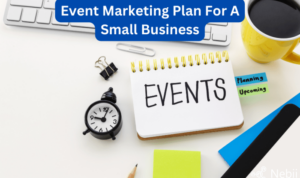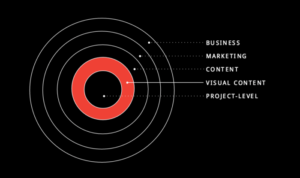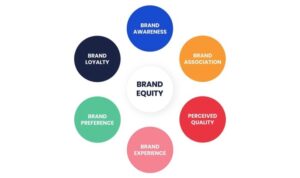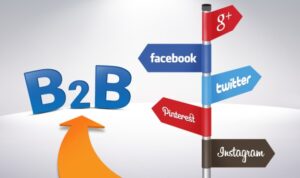Understanding Sales Funnels kicks off the journey into the world of marketing strategies, where each stage plays a vital role in turning potential leads into loyal customers. Get ready to dive deep into the realm of sales funnels!
Introduction to Sales Funnels
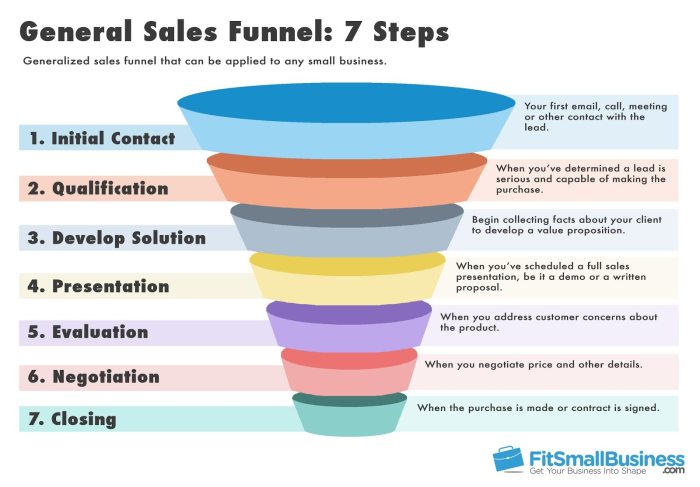
In the world of marketing, a sales funnel is a strategic process that businesses use to guide potential customers through the journey of making a purchase. It helps in understanding the customer’s behavior and optimizing the marketing strategies to increase sales and conversions.
Stages of a Typical Sales Funnel
- Awareness: This is the stage where customers become aware of the product or service offered by the business. It involves creating brand awareness and attracting potential customers.
- Interest: Once customers are aware of the product, they move to the interest stage where they show interest in learning more about the product or service.
- Decision: In this stage, customers evaluate the options available and make a decision on whether to purchase the product or service.
- Action: The final stage is where the customers take action and make the purchase, completing the sales funnel process.
Examples of Industries Using Sales Funnels
- E-commerce: Online retail businesses heavily rely on sales funnels to guide customers through the process of browsing products to making a purchase.
- Real Estate: Real estate agents use sales funnels to nurture leads, showcase properties, and ultimately close deals with potential buyers.
- Software as a Service (SaaS): SaaS companies use sales funnels to offer free trials, educate users about the software, and convert them into paying customers.
Creating an Effective Sales Funnel
To design a successful sales funnel, it is crucial to understand the target audience and optimize each stage of the funnel for better conversions.
Understanding the Target Audience
Identifying the target audience is the first step in creating an effective sales funnel. This involves researching and analyzing the demographics, behaviors, and preferences of potential customers to tailor the funnel to their needs.
- Conduct market research to gather data on the target audience.
- Create buyer personas to represent different segments of the audience.
- Understand the pain points and motivations of the target audience.
Optimizing the sales funnel for the target audience increases the chances of converting leads into customers.
Optimizing Each Stage of the Funnel
Each stage of the sales funnel plays a crucial role in guiding leads towards making a purchase. By optimizing these stages, businesses can improve conversion rates and drive revenue growth.
- Awareness Stage: Create compelling content to attract leads and generate interest.
- Interest Stage: Provide valuable information to educate leads about the product or service.
- Decision Stage: Offer incentives, discounts, or free trials to encourage leads to make a purchase.
- Action Stage: Make the buying process simple and seamless to convert leads into customers.
Types of Sales Funnels
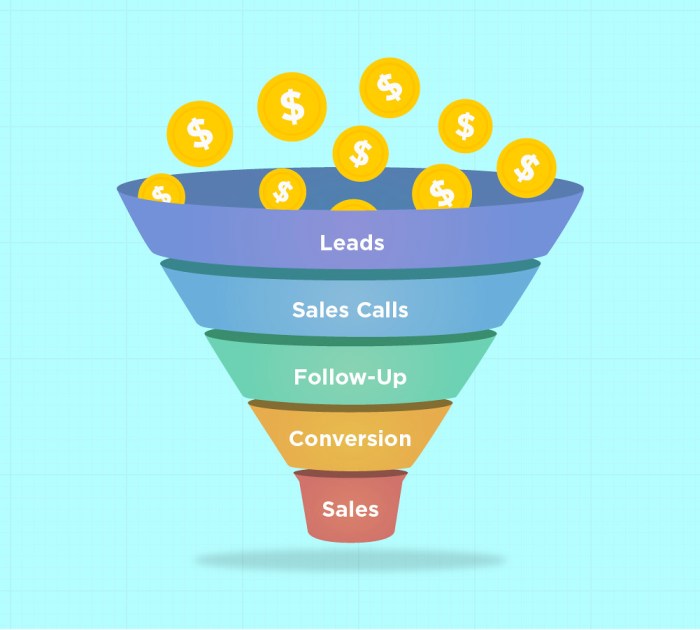
When it comes to sales funnels, there are various types that serve different purposes in the journey of converting leads into customers. Let’s take a look at some of the most common types of sales funnels.
Lead Generation Funnels, Understanding Sales Funnels
Lead generation funnels focus on capturing potential customers’ information and nurturing them into leads. These funnels typically offer something of value in exchange for contact details, such as a free ebook or webinar.
- Characteristics:
- Lead magnets to attract prospects
- Opt-in forms to collect contact information
- Email sequences to nurture leads
- Purpose: To build a list of potential customers and guide them through the sales process.
Webinar Funnels
Webinar funnels involve promoting a live or recorded webinar to educate prospects about a product or service and ultimately convert them into customers.
- Characteristics:
- Registration page to sign up for the webinar
- Automated email sequences to remind and follow up with attendees
- Sales pitch or offer at the end of the webinar
- Purpose: To educate and engage prospects while presenting a solution to their problems.
Product Launch Funnels
Product launch funnels are designed to introduce a new product or service to the market and create buzz around its release.
- Characteristics:
- Teaser content to build anticipation
- Pre-launch content to warm up the audience
- Sales pages with limited-time offers
- Purpose: To generate excitement, drive sales, and establish brand credibility.
Examples of Successful Companies
1. Lead Generation Funnel: HubSpot offers free tools and resources in exchange for contact information, gradually guiding leads through the sales funnel with targeted content.
2. Webinar Funnel: DigitalMarketer hosts webinars on digital marketing strategies, providing valuable insights and offering their products or services at the end.
3. Product Launch Funnel: Apple creates anticipation with teaser campaigns before launching new products, driving sales through limited-time offers and exclusive deals.
Tools and Technologies for Sales Funnels: Understanding Sales Funnels
In order to effectively build and manage sales funnels, it is crucial to leverage the right tools and technologies. These resources can help streamline the process, track performance, and optimize conversions for your sales funnel.
Essential Tools and Software
- ClickFunnels: ClickFunnels is a popular all-in-one platform that allows users to create and manage sales funnels with ease. It offers a variety of templates, integrations, and features to optimize the funnel-building process.
- Leadpages: Leadpages is another powerful tool for creating landing pages and sales funnels. It offers a user-friendly interface, A/B testing capabilities, and integration options to enhance lead generation and conversion rates.
- Unbounce: Unbounce is known for its drag-and-drop builder, dynamic text replacement, and conversion tools. It is ideal for creating custom landing pages and optimizing the user experience throughout the sales funnel.
Importance of Analytics and Tracking
Analytics and tracking play a vital role in optimizing sales funnels by providing valuable insights into customer behavior, conversion rates, and performance metrics. By analyzing data collected from these tools, marketers can make informed decisions to improve the effectiveness of their funnels.
